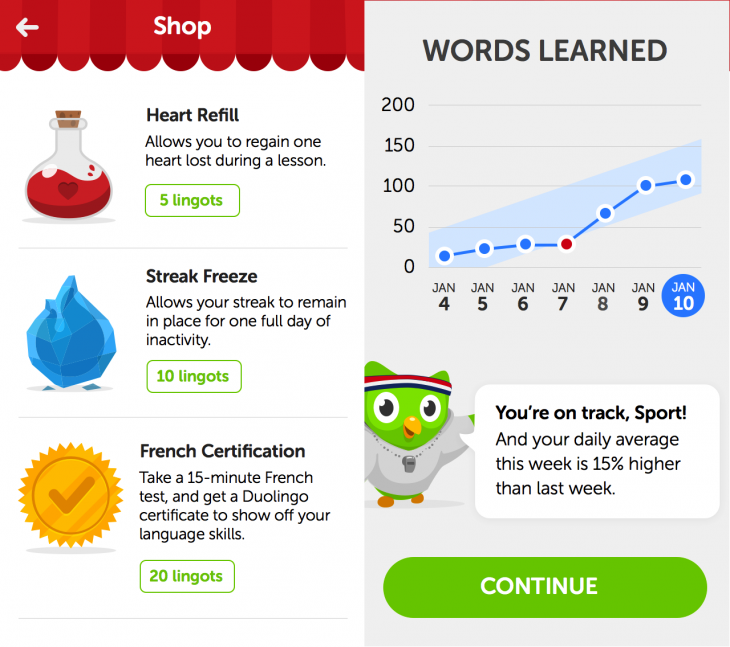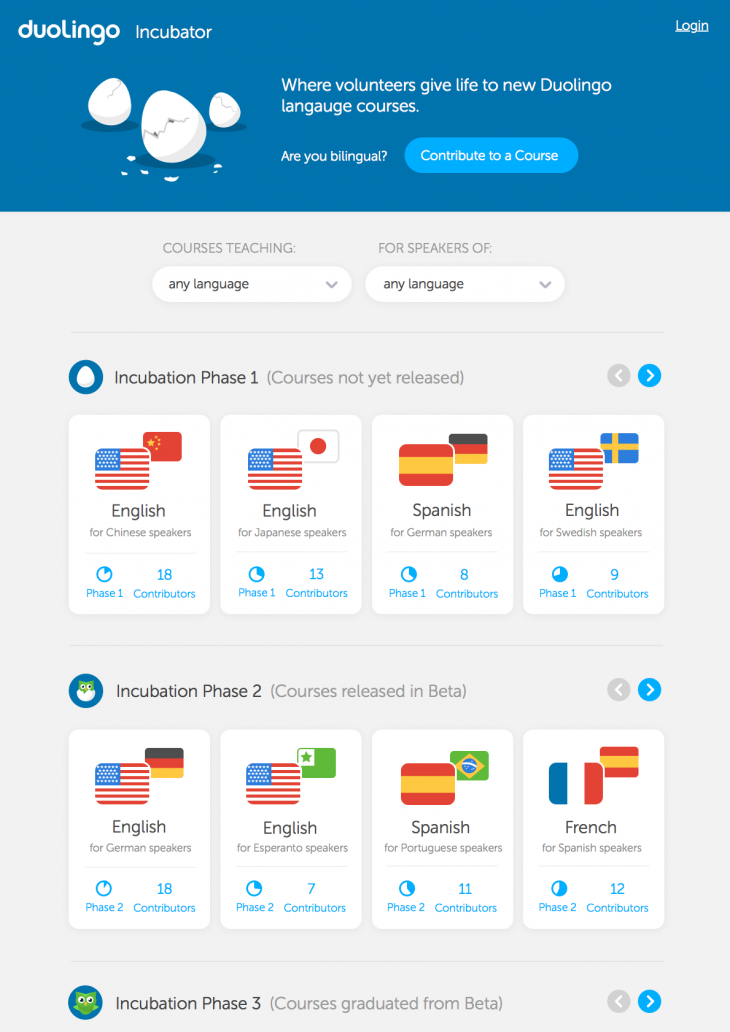
Many people think that free language learning platform competes against other educational language services, Many people might assume free language learning platform Duolingo competes with other educational services, but the company that its co-founder names as a key competitor may surprise you. It’s Candy Crush.
Duolingo co-founder Luis von Ahn tells TNW in an interview that the company views games as its competitors, mainly because they occupy time that users spend on mobile.
When we ask people why they enjoy Duolingo, we were expecting answers like: ‘I’ve always wanted to learn a language’ or something like that, but the most common answer is ‘because it’s a fun past-time that doesn’t actually ‘waste’ my time.’
So we’re eating into gaming time, not eating into study time. Our users are people who are procrastinating, but instead of playing Candy Crush, they’re getting something useful out of it.
This also explains why late last year, Duolingo updated its iOS app to introduce a gamified virtual store. The store lets users purchase virtual items to customize their experience with a virtual currency called “Lingots,” which users can earn by achieving certain milestones in Duolingo. Von Ahn tells us that this gaming element was to make Duolingo more of a fun thing.
The way that Duolingo is going about gamifying language-learning will no doubt be a boost for the next region it intends to target: Asia.
After all, mobile games in Asia — in particular China — are hugely popular. A recent report released by state-affiliated research organization China Internet Network Information Center (CNNIC) showed a 54.5 percent growth in the number of users playing mobile games to reach 215 million as of end-2013, up 75.9 million from the end of 2012. Even messaging apps in Asia have taken to adding games to their platforms to hook in users.
Duolingo’s positioning as a fun app with the addition of gaming elements, beyond its core use of learning new languages, will no doubt be a boost for its standing in Asia.
Furthermore, a recent funding round raised by Duolingo will also aid its move into the region. The company closed a $20 million round led by venture capital firm Kleiner Perkins Caufield & Byers earlier this week. Von Ahn says:
In Asia we’re not as big because we don’t support any Asian languages, but that’s one thing we’re definitely going to be doing over the next few months. In fact, part of this investment is to focus on supporting and attracting Asian users. We have not entered Asia almost at all. We do have some users, but compared to the Americas and Europe, it’s very small.
Right now, the regions where Duolingo sees its highest traffic are the Americas and Europe. A quarter of its traffic comes from the US, while Brazil takes second spot with 15 percent of the traffic, and the third is Mexico.
To move into Asia, von Ahn tells us that the first step is to simply offer the product first — which means courses that let students learn English from Asian languages including Chinese, Japanese and Korean. He says that these courses will be up in the “next few months” with Japanese ready in about a month.
The courses are being created by the Duolingo community. This stems from a crowdsourcing program the company announced in October last year — called the Language Incubator, which lets native speakers and language enthusiasts create courses that an algorithm will subsequently ensure are in line with Duolingo’s standards.
Von Ahn notes that these course creators don’t tend to be from Asia, given the small number of users Duolingo currently counts from the continent, but are more likely US citizens who were originally from Asia.
Von Ahn admits that Duolingo is considering its first ever marketing campaign once the course land on the service, but the company will see how things go first:
So far we’ve never had to do any type of marketing in any country that we enter — for example, we just started teaching English from Russian and it’s growing by itself without us having to do any marketing. We already have about 150,000 users there. So we’re hoping that the same will happen in Asia, but we don’t know.
Other than its Asia plans, Von Ahn reveals that Duolingo is also planning to beef up its current platform with two major features: certification and group learning.
Duolingo is going to start certifying that their users have successfully mastered a language, which can then be submitted to employers or universities. Von Ahn notes that Duolingo has received a lot of requests for this, especially in emerging markets, as current tests tend to be expensive and people need to make an appointment in advance and travel down to testing centers to take them.
“We’re going to have a test as well, but it’s a test that you can take from your phone or on the Web, so you can take it at home, you can take it anytime — and it’s going to cost $20, not $250,” Von Ahn says, referring to the fact that the TOEFL test can cost up to $250 — which “may be a month’s salary” for some people in emerging markets.
“We think we can do a good job with certification… we think it’s quite unfair that these tests are so expensive because it costs like $10 to administer a test, it does not cost $200,” Von Ahn tells us.
To push general acceptance of its certification, Duolingo has come up with a study that shows people who take its tests have scores that are highly correlated with scores of the other tests. Von Ahn says that once enough people start taking the test, because it’s more convenient and cheaper, he hopes that they will start pressuring employers and universities to accept the Duolingo certificates. On top of that, Duolingo is launching these tests and in turn, certifications, with a few launch partners.
The certification feature will come some time later this year, but what will arrive first on Duolingo is a groups feature, according to Von Ahn.
Right now on Duolingo, people essentially learn individually. However, there have been many requests, especially from teachers, who want an easy way to keep track of all their students in a classroom. Duolingo estimates that there are tens of thousands of school-going children using its platform.
“So we’re going to have a groups feature, where the idea is that anyone can make a group of learners, and the leader of the group can always see the progress of everybody else, so you can think of it as like a teacher. But it doesn’t have to be a classroom, it can be any type of group,” Von Ahn says. Groups will have a leaderboard and a message board, with the idea to get them to learn together competitively. It will land on Duolingo “relatively soon.”
With these new value-added features, as well as the gaming element, Duolingo looks set to appeal to a wide swathe of users in Asia who are keen to learn English. However, whether it can stand out amidst the competition — after all, there are already online learning platforms that users in Asia rely on, and Duolingo has to appeal enough for them to switch. The fact that it’s a free app though, will no doubt be a boon for it too.
Headline image via Shutterstock, other image via Leo Ramirez/AFP/Getty Images
Get the TNW newsletter
Get the most important tech news in your inbox each week.







